在现代照明项目中,灵活性与亮度或效率一样重要。 设计师、工程师和承包商不再对简单的开关控制感到满意——他们需要适应不同情绪、功能和能源目标的照明。 这是可调光LED灯带起到至关重要的作用的地方。 然而,有了多种调光协议,从基本的模拟选项到高级数字系统,选择正确的解决方案可能会令人困惑。 在本文中,我们将探讨顶部可调光的LED灯条选项,比较它们的优点和缺点,并为您的项目选择最合适的调光方法提供实用的指导。
为什么LED灯条中的调光很重要
照明不再只是提供足够的亮度来查看。 在商业和住宅项目中,它有望创造舒适、节约能源和适应不同的任务。 可调光的LED灯带使设计师和建筑业主能够微调照明,而不是满足于一种万能的方法。
从能源的角度来看,调光直接降低了功耗。 当灯光降至 50% 输出时,能源使用量通常会下降相似的数量,这意味着降低水电费和更小的环境足迹。 对于管理大型空间的企业来说,这种效率可以增加显着的长期节省。
舒适和氛围是另一个主要原因。 零售店可能希望在高峰时段有更亮的光线来突出产品,而酒店休息室可能更喜欢在晚上更温暖、更柔和的光泽。 可调光带允许一套系统在不更换夹具的情况下满足这两种需求。
还有耐久性的问题。 以低功率运行的 LED 产生的热量更少,这可以延长条带及其电源的使用寿命。 对于设施经理来说,这意味着更少的更换和更低的维护成本。
最后,调光可以与智能控制系统集成。 办公室可以根据日光自动执行灯光级别,娱乐场所可以将条带与音乐或舞台效果同步。 这种控制水平已成为现代照明设计的标准,可调光的 LED 灯条使其以灵活、紧凑的格式访问。
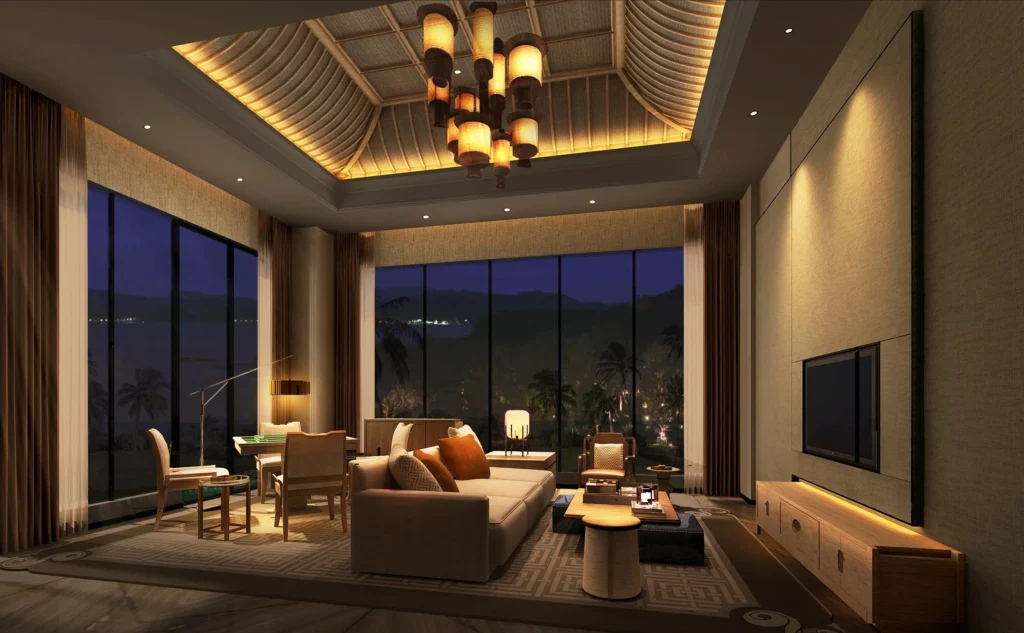
LED灯条调光方法概述
当涉及到可调光的LED灯带灯时,没有单一的“通用”解决方案。 已经开发出不同的调光协议以满足各种应用的需求,从简单的家庭装修到大型商业项目和娱乐场所。 每种方法都有其优点、局限性和技术要求。
在深入了解每个系统如何工作的细节之前,退后一步并着眼于更大的图景是很有用的。 下表提供了最常见的调光选项(PWM、TRIAC、0-10V、DALI 和 DMX)的并排比较,因此您可以快速了解它们在定义、优势、缺点和典型应用方面的差异。
| 调光法 | 定义 | 优点 | 缺点 | 典型应用 |
| PWM(脉冲宽度调制) | 通过快速打开/关闭LED和改变占空比来调整亮度。 | 调光范围广,性价比高,操作简单。 | 如果设计不佳,可能会引入闪烁;对于大型网络有限。 | 住宅、零售、一般照明。 |
| TRIAC(相位调光) | 采用交流相位切割技术,需要兼容的 LED 驱动器。 | 适用于传统的壁挂调光器,轻松改造。 | 兼容性问题,不那么精确,闪烁的风险。 | 家庭升级,小型项目。 |
| 0-10V调光 | 模拟控制 使用 0–10V 信号调节亮度。 | 可靠,在商业环境中广泛采用。 | 需要额外的控制线;有限的高级功能。 | 办公室、学校、医院、工厂。 |
| DALI(数字可寻址照明接口) | 具有双向通信和可寻址性的数字协议。 | 智能、灵活,允许分组和个人控制。 | 更高的成本,需要调试。 | 酒店、高档办公室、智能建筑。 |
| DMX(数字多路复用) | 专为舞台照明设计的数字协议,支持 RGB 效果。 | 高精度,适合变色LED灯条。 | 复杂的布线,需要熟练的设置。 | 剧院、俱乐部、娱乐、立面照明。 |
考虑到这个概述,我们现在可以仔细研究每种调光方法,探索它在实践中的工作方式,是什么让它与众不同,以及它最适合现实世界项目的地方。
PWM调光(脉冲宽度调制)
定义
PWM 或脉冲宽度调制是控制 LED 灯带亮度的最常见方法之一。 PWM 不是降低 LED 的电压,而是通过以非常高的频率快速打开和关闭灯来工作。 通过改变开启时间与关断时间的比率(称为占空比),平均光输出对人眼看起来更亮或更暗。
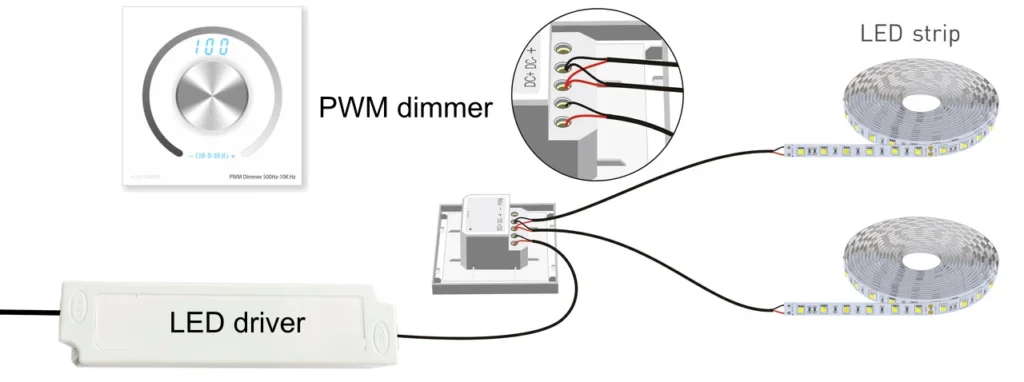
特点
PWM的关键特性之一是其宽的调光范围。 LED可以从全亮度到非常低的水平平稳地调整,而不会出现明显的色彩偏移,使其成为许多项目的多功能选择。
另一个特点是兼容性。 PWM调光由各种LED驱动器和控制器支持,从简单的手持遥控器到先进的智能家居系统。 这使得它成为住宅用户和小型商业装置的简单切入点。
成本效益也是一个重要的特点。 与更先进的数字协议相比,PWM调光系统相对实惠,需要较少的专业设备。
优点和缺点
PWM的主要优点是其灵活性。 它在不同亮度级别提供一致的光质量,可用于单色、可调谐的白色和 RGB LED 灯带。 它的成本更低,也使其成为预算紧张的项目的实用选择。
不利的一面是,设计不佳的 PWM 系统可能会引入可见的闪烁,尤其是在极低的调光水平或被摄像机记录时。 虽然高频PWM可以降低这种效果,但需要仔细设计驱动器和控制系统。 PWM 也不太适合大规模网络,模拟或数字通信协议提供了更多的稳定性。
应用
PWM调光广泛用于住宅照明,如内阁下条、重点照明或装饰装置。 在零售环境中,它可以提供灵活的亮度调节,以在一天中的不同时间突出产品。 小型商业项目,如咖啡馆或精品店,也受益于其可负担性和易用性。

TRIAC 调光
定义
三端双向调光,也称为相位切割调光,是一种用于白炽灯和卤素灯的方法。 它通过在到达光源之前切割一部分交流波形来工作,有效地减少了传递的功率。 应用于LED灯条时,需要兼容的AC/DC驱动器将此信号转换为LED的稳定直流电源。
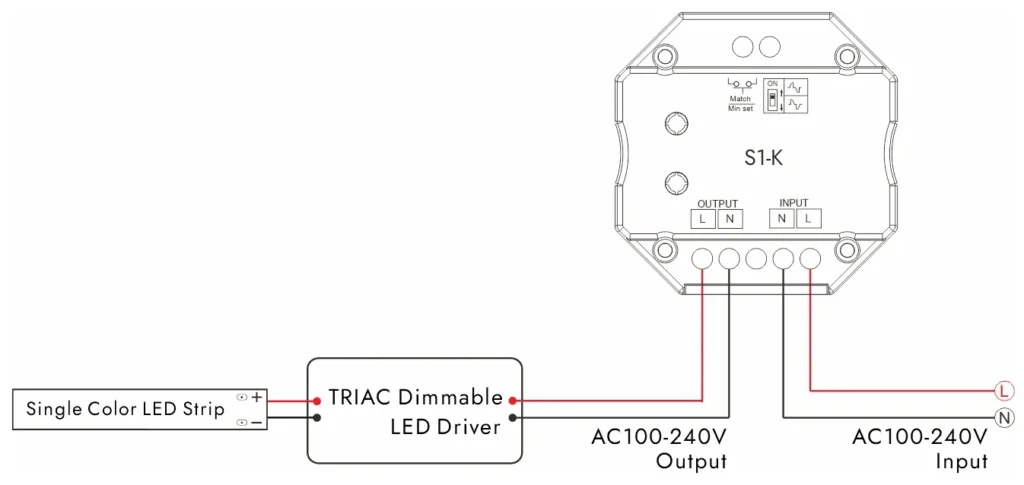
特点
TRIAC调光最显着的特点是它与传统的壁挂调光器的兼容性。 这使其成为改造项目的有吸引力的解决方案,因为现有的布线和开关已经到位。 用户在升级到 LED 技术时通常可以保留旧的调光器开关。
另一个重要的特点是它的简单性。 由于它直接与交流输入一起工作,因此 TRIAC 调光不需要额外的控制线路。 对于寻求直接升级的房主或安装人员,这可以节省安装过程中的时间和成本。
最后,TRIAC调光是广泛可用的。 因为它在照明行业已经使用了几十年,所以在大多数市场上很容易采购与三端双向可调式的驱动器和调光器。
优点和缺点
三端双向可调光的主要优点是便利性。 它允许从旧的照明技术平稳过渡到LED,而无需完全重新布线系统。 与数字控制协议相比,它也相对实惠。
另一方面,TRIAC 调光可能会出现兼容性问题。 并非所有 LED 驱动器都能很好地响应相位切割信号,这可能会导致闪烁、有限的调光范围或嗡嗡声。 它的精度也低于 Dali 或 0-10V 等协议,使其不太适合需要精细控制的项目。
应用
三端双向照明最常用于住宅照明,特别是在房主想要调光LED灯条而不改变其电气基础设施的翻新项目中。 它也适用于喜欢传统壁挂式调光器的小型商业空间、咖啡馆或餐馆,以进行基本照明控制。
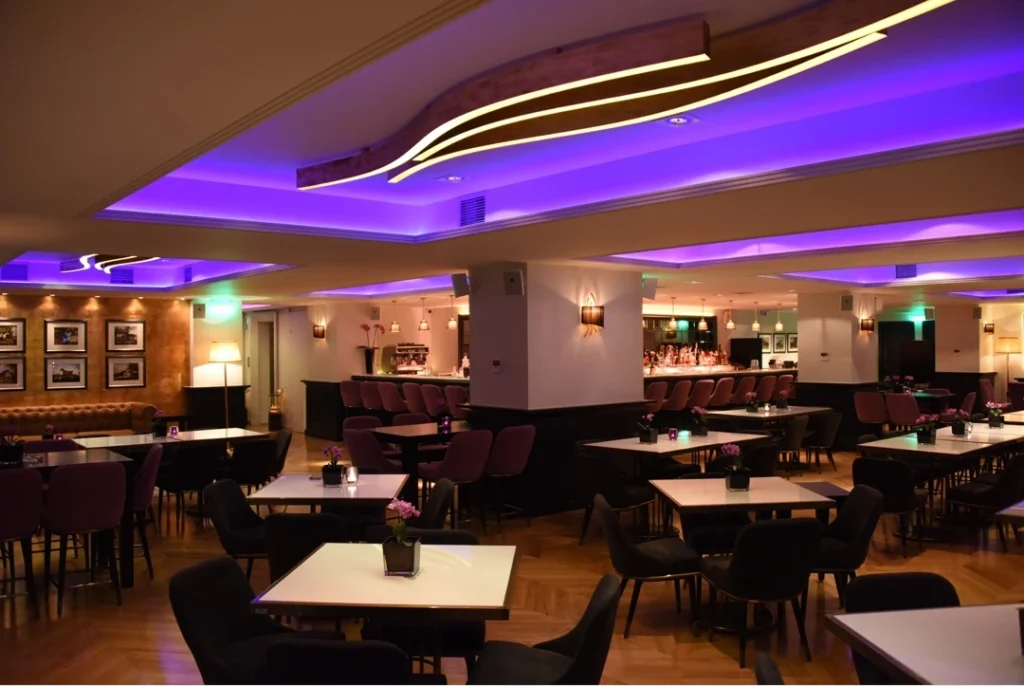
0-10V调光
定义
0-10V调光是在商业环境中控制LED照明的最古老和最广泛采用的方法之一。 它使用通常在 0 到 10 伏之间的低压信号来调节亮度。 在 10V 时,LED 灯条以全亮度运行,而在 0V 时,灯光处于最低水平或完全关闭,具体取决于驱动程序的设计。
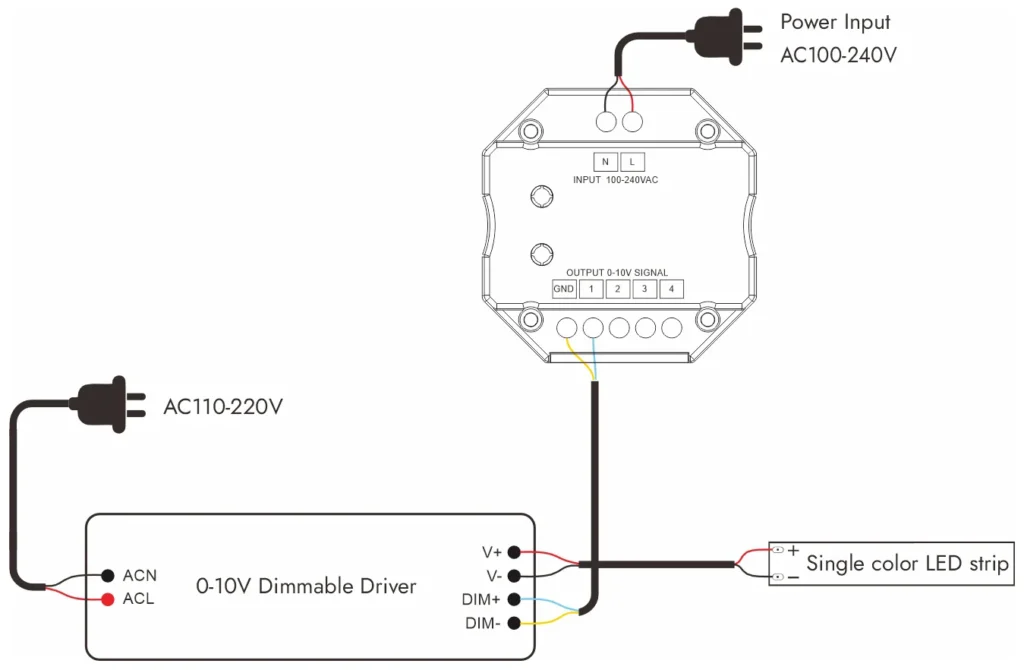
特点
0-10V调光的主要特点是其可靠性。 因为它是一个模拟系统,所以控制信号很简单,不容易出现数字通信错误。 这使其成为在苛刻环境中长期性能的可信解决方案。
另一个功能是可扩展性。 0 -10V 系统相对容易扩展,允许多个 LED 驱动器由相同的信号控制。 这在许多固定装置中需要一致的照明水平的大房间或开放式空间中特别有用。
但是,除了主电源线之外,该系统确实需要额外的一对用于控制信号的线。 虽然这是新建筑中的一个小考虑,但它可能会增加改造方案的复杂性。
优点和缺点
0-10V调光的主要优点是稳定性、简单性和广泛的行业认可度。 它是一种成熟的技术,可与 LED 灯条配合使用,它可以与商业建筑中的占用传感器和日光收集系统集成。
不利的一面是,与 Dali 等数字协议相比,0-10V 的控制能力受到限制。 连接到同一控制线的每组固定装置将变暗,使单独或可寻址的控制变得不可能。 对额外布线的需求也降低了小型住宅项目的吸引力。
应用
0-10V调光在办公室、学校、医院和工业建筑中非常受欢迎,在这些建筑中,一致、可靠的照明是优先事项。 它通常用于天花板照明与 LED 灯条相结合的任务或环境照明。 在这些环境中,它在可负担性和专业级控制之间提供了适当的平衡。
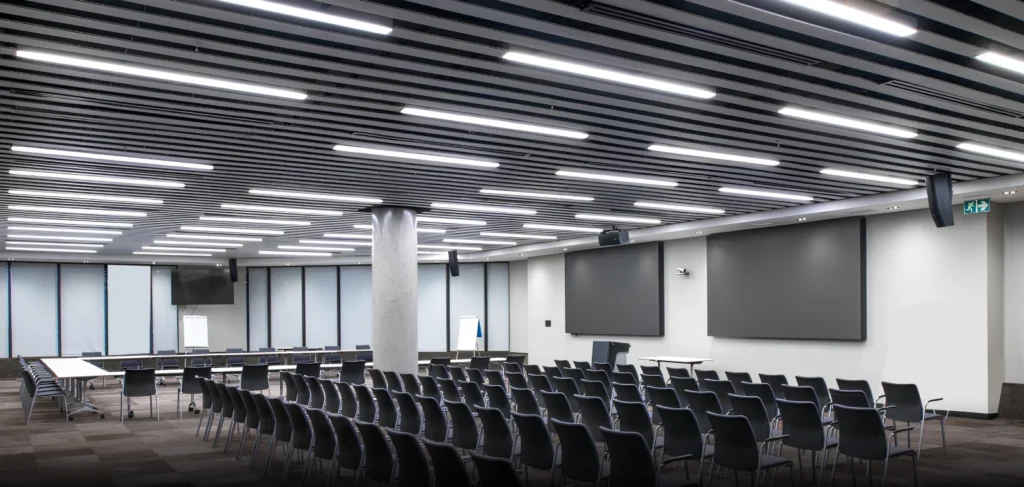
DALI DIMMING(数字可寻址照明接口)
定义
DALI,是数字可寻址照明接口的缩写,是专门为照明控制开发的标准化数字协议。 与模拟方法不同,DALI 允许灯具和控制系统之间的双向通信。 连接到 DALI 网络的每个驱动器或控制器都可以单独寻址,从而能够对大量 LED 灯条和其他灯具进行精确和灵活的控制。
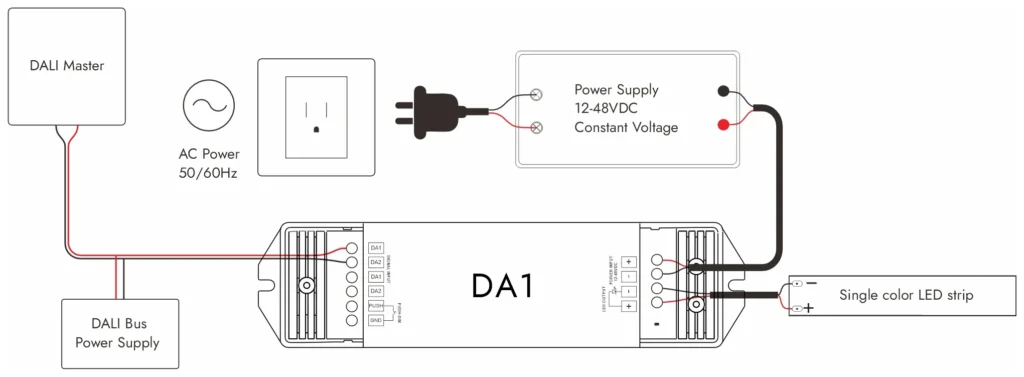
特点
DALI最重要的特点是可寻址性。 DALI 总线上的每个固定装置都可以编程为独立运行或作为组的一部分运行。 这使照明设计师在空间的照明和调整方式中有更大的自由度。
另一个特点是集成。 DALI 通常用于照明需要与建筑管理系统 (BMS) 无缝协作的智能建筑中。 它支持调度、日光收集和基于占用的控制,使其成为未来的选择。
达利还提供双向通信。 夹具可以向控制系统发送反馈,例如状态、功耗或故障信息。 这为需要持续监控大型设施的设施经理增加了价值。
优点和缺点
DALI 的主要优势是灵活性、精确性和可扩展性。 它允许高级场景设置,并且可以轻松重新编程,无需进行重大重新布线。 对于高端项目,这种控制水平可以证明投资是合理的。
缺点主要与成本和复杂性有关。 DALI 驱动程序和控制设备比简单的解决方案更昂贵,并且安装需要经过训练的人员进行适当的调试。 对于小型项目,额外费用可能超过收益。
应用
大理调光广泛应用于酒店、办公楼、博物馆和智能园区等优质商业项目。 在这些环境中,照明不仅是功能性的,而且是整体用户体验和建筑效率战略的一部分。 由达利控制的LED灯带灯可以无缝集成到天花板、墙壁或家具中,提供美学和智能控制。

DMX 调光(数字多路复用)
定义
DMX 是数字多路复用的缩写,是最初为舞台和戏剧照明开发的控制协议。 从那以后,它已成为必不可少的娱乐和建筑照明的标准。 在LED灯带照明中,DMX特别适用于RGB和RGBW应用,其中需要控制各个通道以实现平滑的色彩混合和复杂的序列。
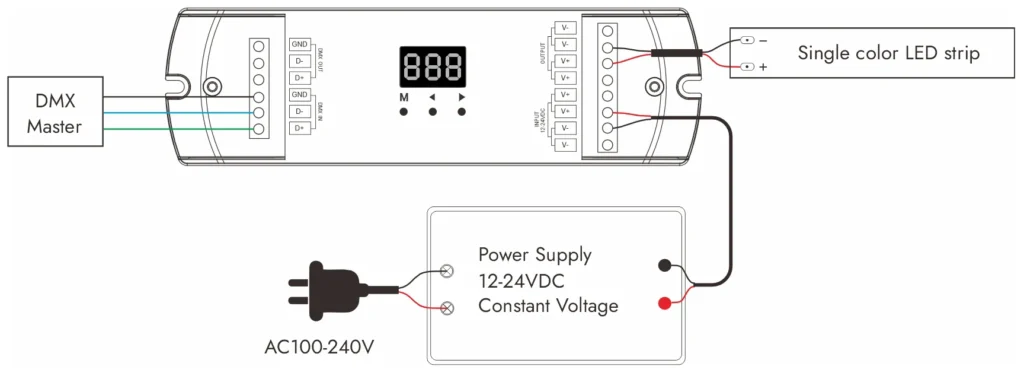
特点
DMX 的定义特征之一是精度。 该协议每通道提供 256 级控制,这意味着平滑调光和准确的颜色变化。 对于依赖于戏剧性照明效果的项目,这种细节水平至关重要。
另一个特点是多功能性。 单个 DMX 控制器可以管理数百个通道,允许设计人员在大型外墙、舞台或活动空间中创建同步照明。 每个 LED 灯条或驱动器都可以分配给特定的地址,从而可以创建高度定制的设计。
DMX 还支持动态编程。 借助专用软件或控制台,可以实时预设和触发灯光场景,通常与音乐、视频或现场表演同步。
优点和缺点
DMX 最大的优势在于其创造潜力。 它打开了无尽效果的大门,从平滑的淡入淡出到频闪、追逐或全光谱的色彩展示。 对于想要脱颖而出的娱乐场所或建筑项目,DMX 提供了无与伦比的可能性。
缺点是复杂性。 DMX 需要仔细规划、专用布线和专业设置。 虽然功能强大,但对于简单的白色 LED 灯带应用或小型项目来说,它是矫枉过正的。 该系统还需要持续的专业知识,因为控制器和软件需要进行正确编程。
应用
DMX Dimming 是剧院、俱乐部、主题公园和动态控制至关重要的现场活动的首选。 它还越来越多地用于建筑照明,例如建筑立面、桥梁和公共地标,丰富多彩的效果增强了视觉识别。 对于 LED 灯条,最常选择 DMX 用于需要充满活力、可编程效果的 RGB/RGBW 项目。

如何为您的项目选择正确的调光选项
在为 LED 灯条照明选择调光方法时,没有“一刀切”的解决方案。 正确的选择取决于您的项目的规模、预算、系统兼容性和设计目标。 以下是帮助您决定的实用指南:
1。 用于基本的商业或办公室照明 – 0-10V
如果您的项目相对简单,无需高级编程,0-10V 调光提供了经济高效且可靠的选择。 特别适合平滑调光就足够的办公室、仓库和通用商业区域。
2 。 智能建筑项目 – 大理
当您的项目需要集中控制、场景设置和未来可扩展性时,Dali 是专业的解决方案。 它与建筑管理系统 (BMS) 无缝集成,适合大型办公室、医院、学校和高端商业空间。
3。 用于住宅和装饰照明 – TRIAC
如果您想与现有的墙壁调光器兼容,尤其是在家庭、餐馆或零售店,TRIAC 调光是最方便的选择。 它避免了额外的布线,并且在温暖舒适的照明环境中效果很好。
4。 适用于在夹具级别进行平稳控制的项目 – PWM
PWM调光是重要的亮度和色彩一致性很重要的LED灯条的理想选择。 它广泛用于装饰照明、重点照明和需要无闪烁性能的项目。
5。 娱乐和建筑项目 – DMX
当您需要动态效果、鲜艳的色彩或与音乐或视频同步的照明时,DMX 是明显的赢家。 它最适合视觉冲击力为关键的剧院、俱乐部、地标或大型外墙。
最终想法
选择正确的调光协议意味着平衡简单性和灵活性。 小规模项目受益于0-10V或TRIAC等简单解决方案,而大型复杂系统通常需要DALI或DMX。 对于光质量至关重要的应用,PWM 仍然是一个可靠的选择。

在 SignliteLed,我们提供全系列可调光 LED 灯条和兼容驱动器,与 Tridonic、EuChips、Sunricher 和 Lifud 等值得信赖的品牌合作。 无论您需要基本设置还是专业的智能照明系统,我们的团队都可以帮助您找到最佳解决方案。
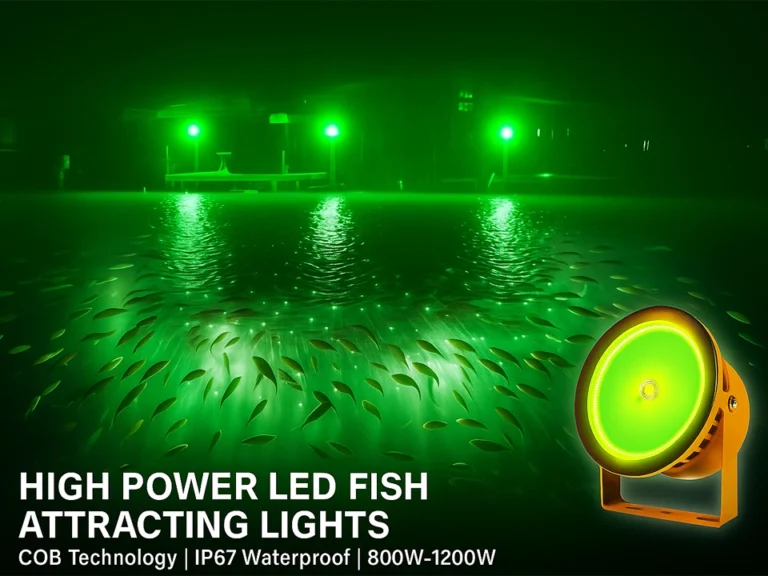
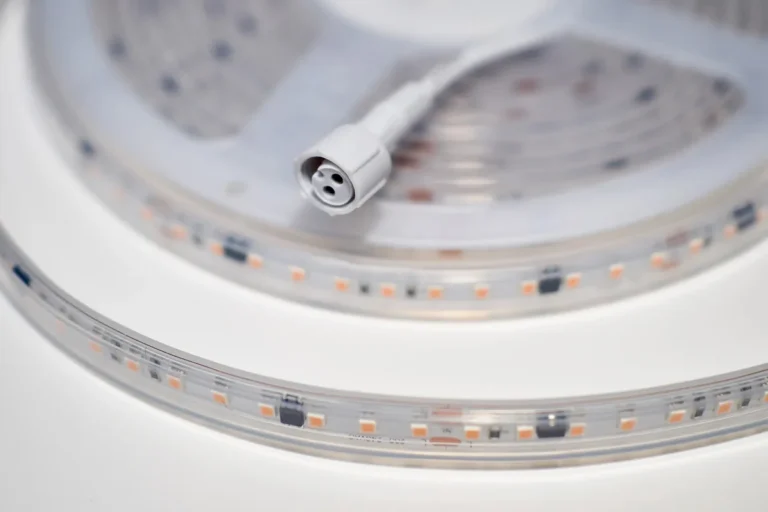
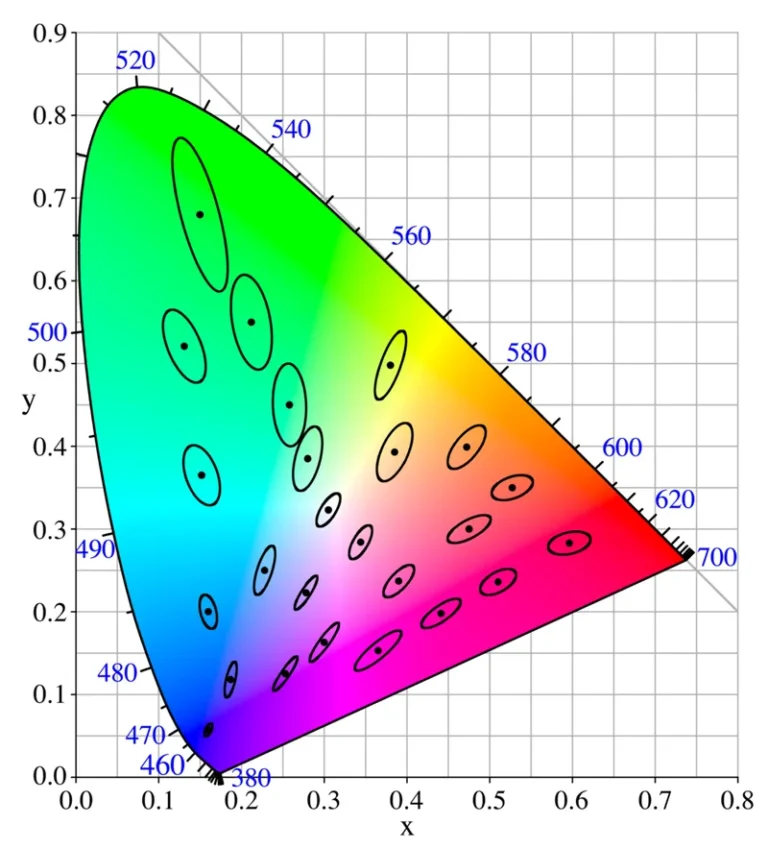
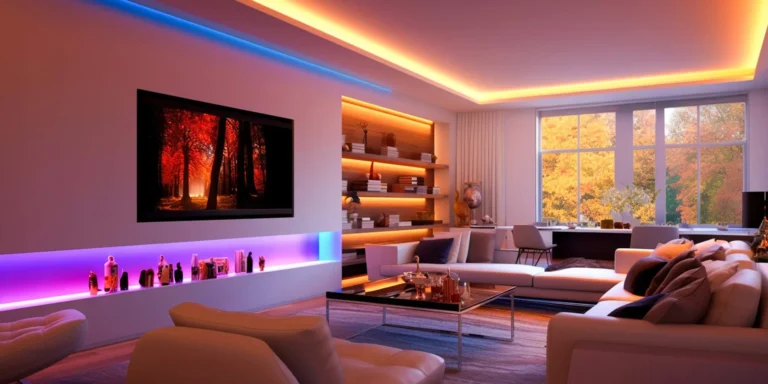

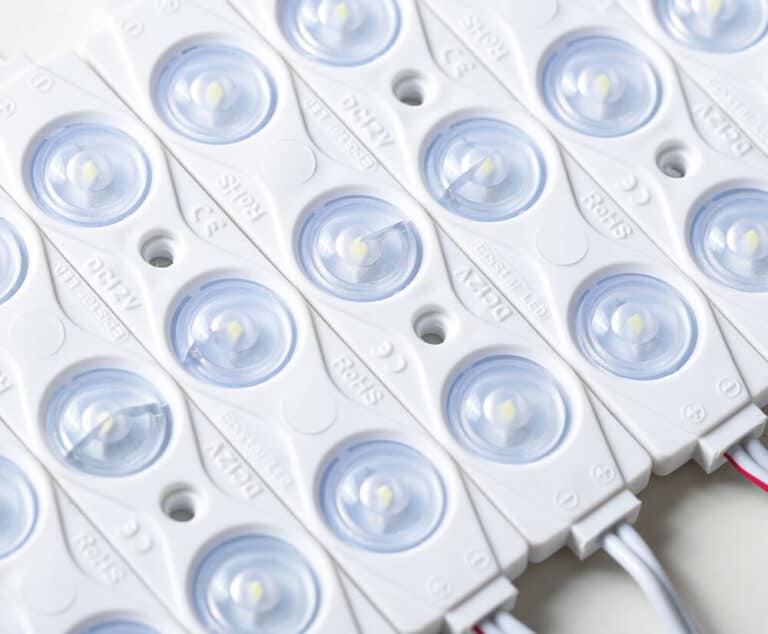

我的兄弟建议我可能会喜欢这个网站 他是完全正确的这篇文章实际上让我的一天你无法想象我花了多少时间来获取这些信息谢谢
精彩的网站很多有用的信息在这里我发送给几个朋友和分享美味,显然感谢你的努力